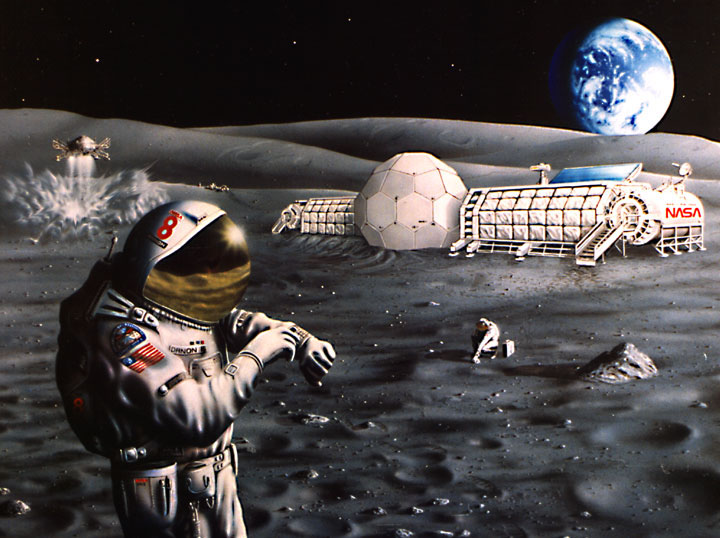
Moon Habitat and Suit Technologies
Moon Habitat and new suit concepts and systems for life support I did for NASA Advanced Life Support Div. The dome was a new design I found in Scientific American back then. It was called a "Geotangent" structure. As opposed to "Geodesic" that had all the same shaped panels, Geotangent had unique panels for each latitude. Bags filled with Regolith (Moon Surface Material) are placed in a framed covering to protect the habitat from cosmic rays, solar particles and radiation, using local resources instead of materials transported from Earth. Also below the dome several levels for living, operations and storage of food water and supplies.
The suit utilizes lightweight covering made out of similar paper used in overnight shipping that is strong, produces no fiber sluff and protects the suit from the glass-like grit of Moon dust that can destroy seals and systems. Each egress the astronaut uses a new vacuum-sealed cover so not dust or particles are brought into the habitat, and is discarded in decompression and transfer to normal pressure and air hab environment. (1987)
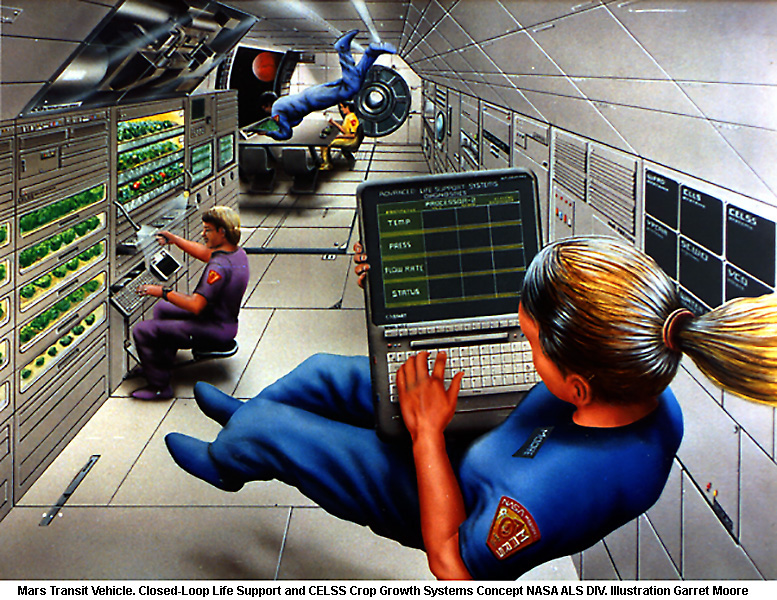
Mars Transit Vehicle (Interior)
Mars Transit, again for NASA ALS Div. Showing the interior work and living space for a spaceship on the way to Mars. The several month journey would have only the supplies taken. My project was to show how the integrated systems might look in such a transit vehicle. Working with CELSS projects that developed different orbital and space crop growth concepts, on-board chemical reactors to scrub and re-supply air and humidity making air re-breathable and water re-drinkable. In the year I did this (1988) there were no "tablet computers" , but I anticipated such and conceived of this RF-Connected and keyboard LCD panel that would be connected to all systems on board. The TV-like screen (upper center), showing Mars, is actually not a window that would be a serious danger to the environment and shield against radiation and micrometeorites, so I envisioned a large HD LCD monitor that could be used for any media the astronauts needed, or a single or multi-screen view from HD cameras looking from all sides of the vehicle. Growing food during the journey from seed and nutrient added to recycled water insured the crew would have healthy and live food to supplement other freezed-dried and dry-preserve stores. (1987)
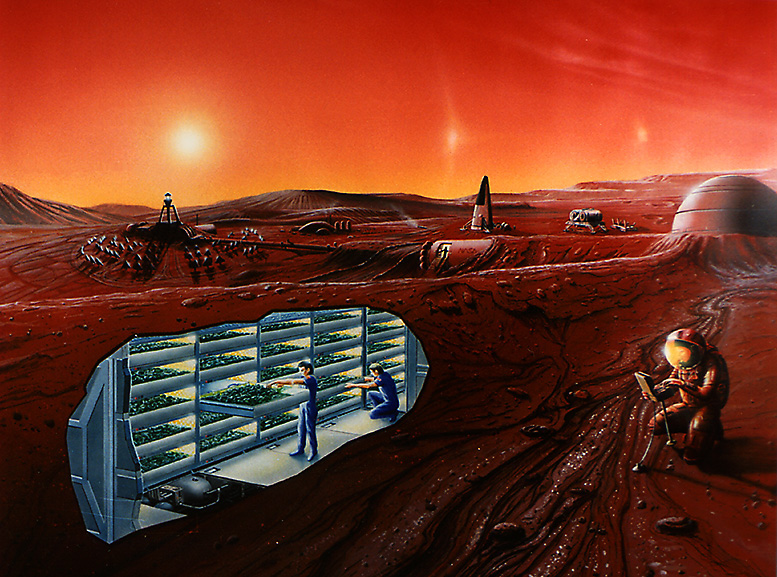
Mars Habitat Concept
In this Mars Habitat concept showing food production I was asked to produce for the CELSS Division, I was given freedom to create any energy source and content showing a Mars Hab/Station with self sustaining technologies being developed in crop-growth and habitat atmospheric processing. The astronaut in the foreground measures the temperature and water in the soil as ice forms from the warm environment around the underground habitat. You can see the solar reactor in the distance. I did not want to use nuclear fission, and fusion was as yet only theory, so with the solar reactor, and maybe three times the mirrors shown, reflecting distant sunlight. The temperature at the focal point may reach 3,500 °C (6,330 °F), and this heat can be used to generate electricity, melt steel, make hydrogen fuel or nanomaterials. Newer designs using liquid sodium have been demonstrated, and systems using molten salts (40% Potassium Nitrate, 60% Sodium Nitrate) as the working fluids are now in operation. These working fluids have high heat capacity , which can be used to store the energy before using it to boil water to drive turbines. These designs also allow power to be generated when the sun is not shining. Yet also, the fluid is cooled by piping it under and around the habitat and constantly warming during a Martian day that then conserves electrical heating. I thought that this concept was an idea worth exploration. (1988)
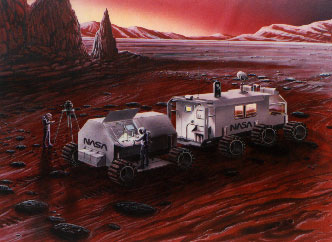
Mars Geo-Exploration and Research Vehicle
Concept for future Mars Search for Sub-Surface Water & Minerals. Surface Vehicle designed for 2-3 Geologist Specialists for extended egress of 1-5 days. Geo-Lab Trailer includes drilling, deep sub-surface sonic imaging and sample chemical testing equipment.
Main RV-type vehicle sleeps 3 with full sat-communications and hi-bandwidth data connection to Base-Earth. More than 10-wheel independent drive for steep incline and obstacle avoidance. Wheels can each telescope vertically and can rotate 360 deg. so vehicle can even be driven sideways at full speed if needed. Self Driving, Remote Control and Navigation to transit to next way-point relieves Martian Geologists to concentrate on rest periods or other tasks. Control from Hand-Wrist, Data-Pad or helmet voice-control HUD system with cockpit video and data feed.
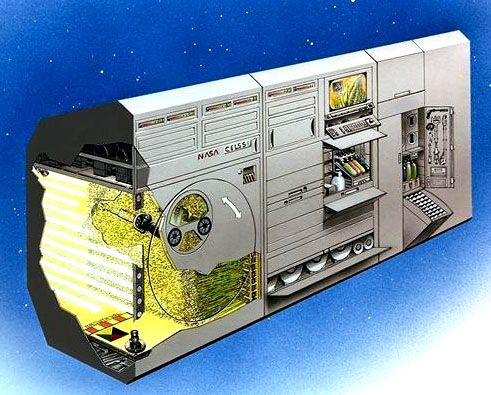
CELSS Orbital Crop Growth System Concept (1988)
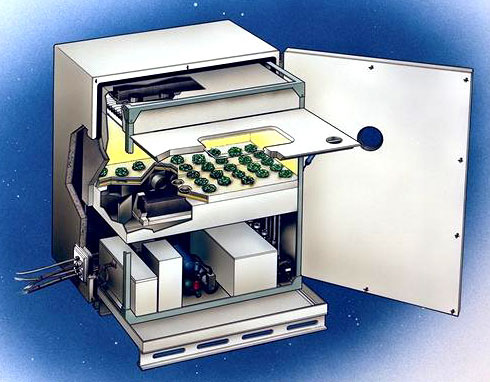
CELSS actual ground test-bed (1988)
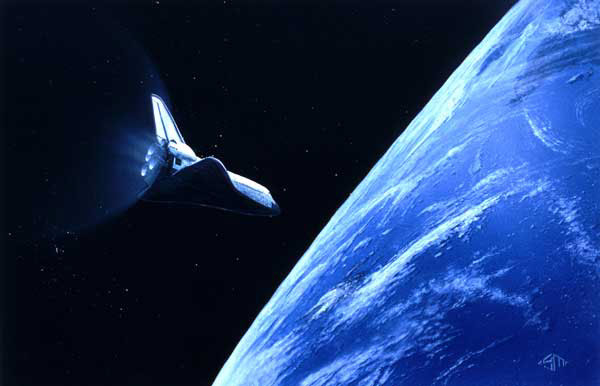
Power De-Orbit of Space Shuttle (1988)
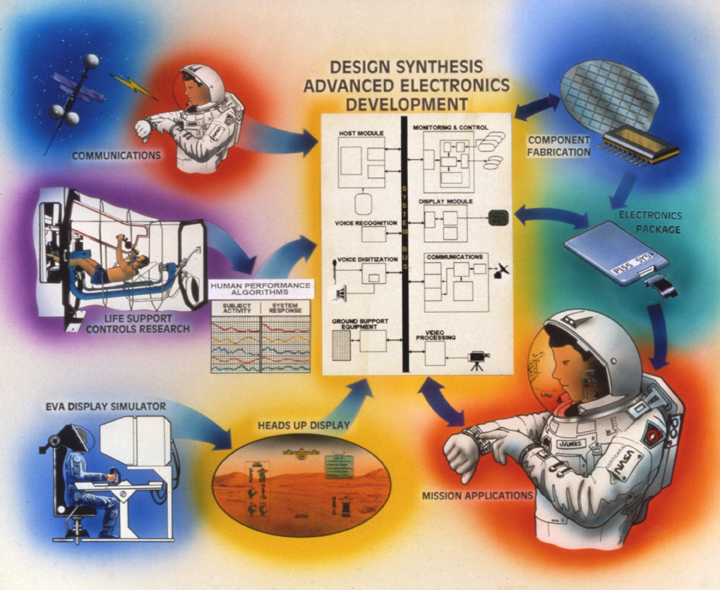
One of many Slide and Projector Sets
Various graphics and diagrams were produced for division use, some used for presentations for budget and project proposals. This is one of countless graphics produced.

CELSS Concept Visualization
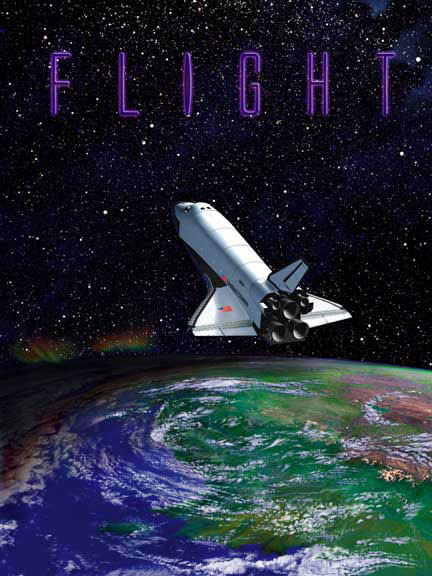
Poster for Space Flight Inspiration (1989)
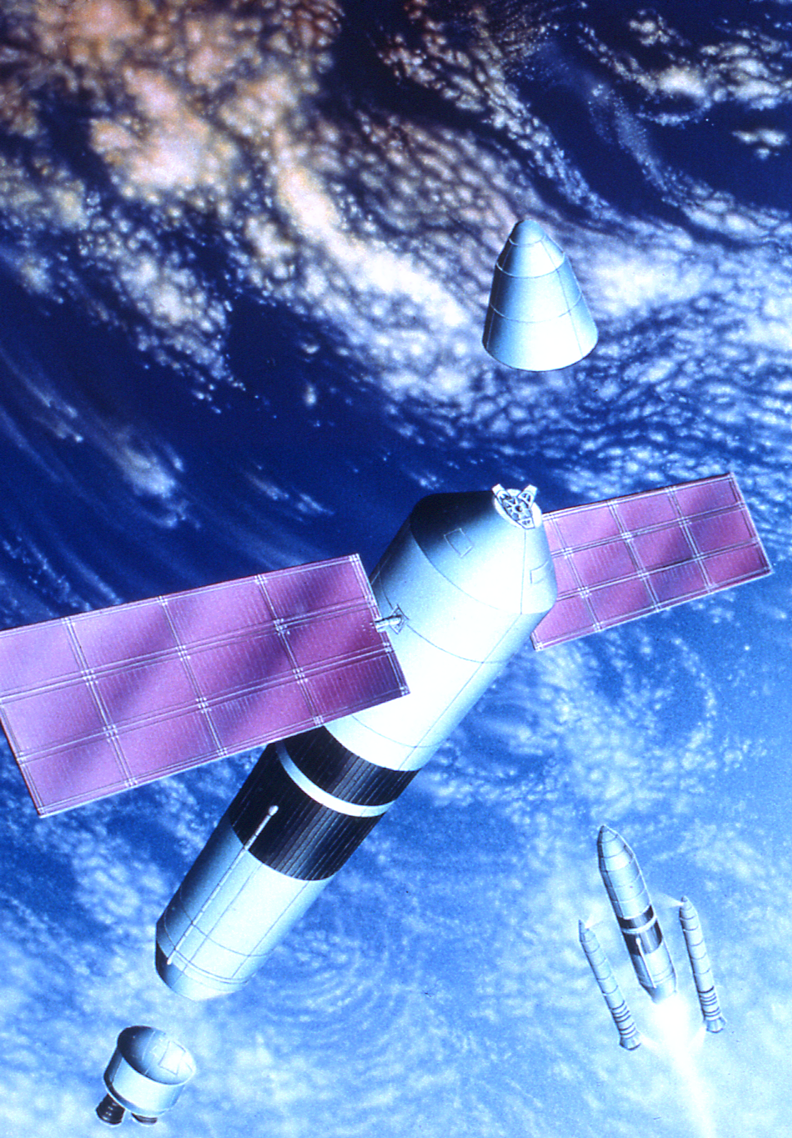
Cover Space News Weekly. ULV (Unmanned Launch Vehicle) 1887


